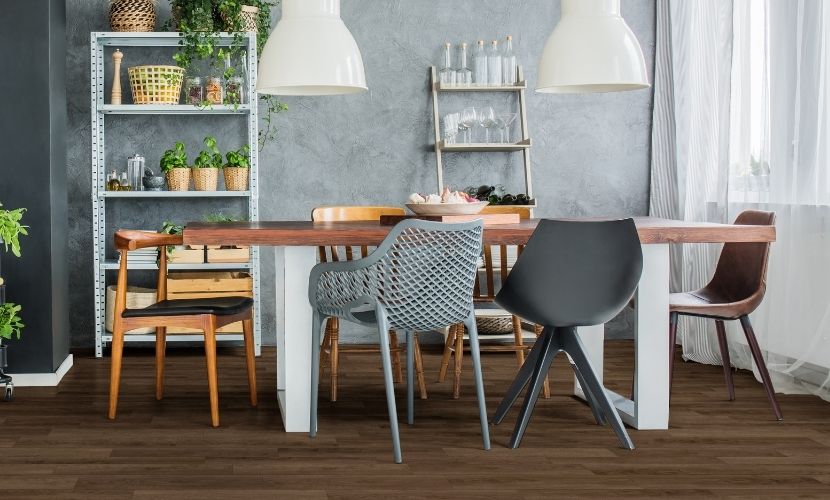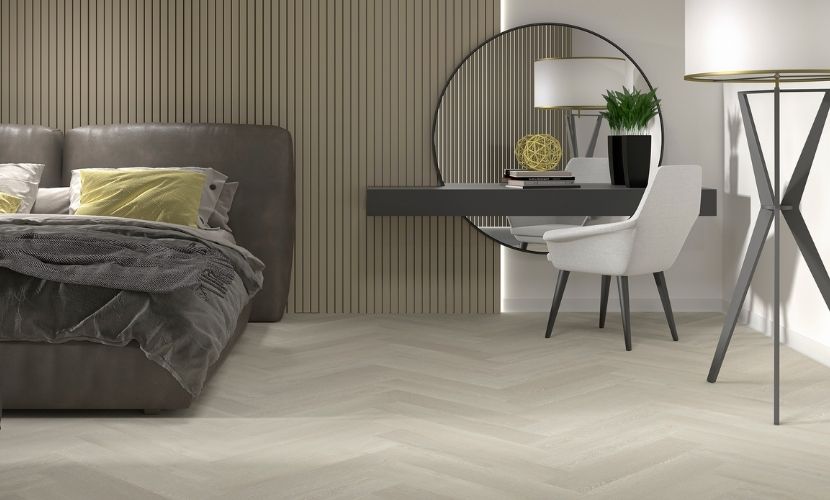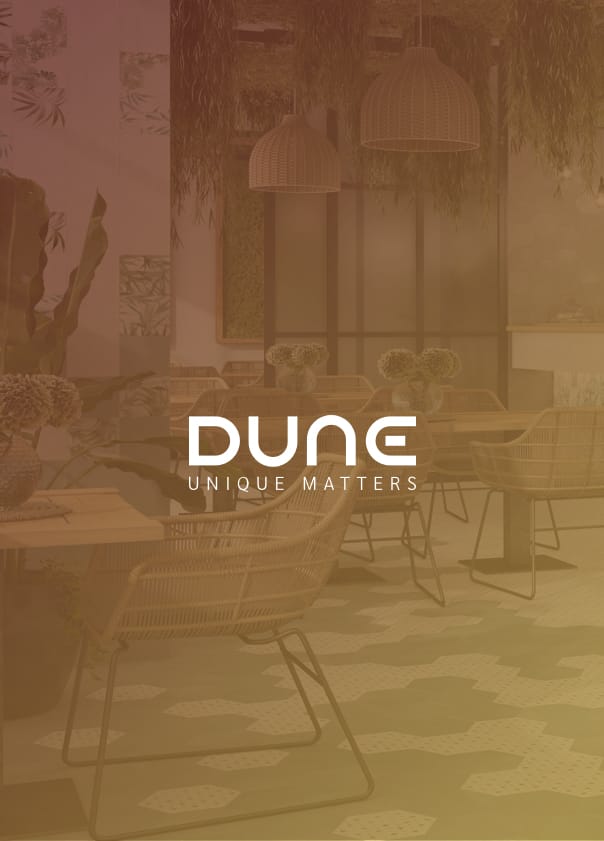Types of vinyl floors: Which one suits your needs?
More and more interior design projects search responding quickly to customer needs. In the same way, they also search offering solutions that fulfil the users' expectations without keeping an eye on the current trends. Likewise, more and more people want to create a magazine space without having to embark on lengthy periods of building work. For all these reasons, when it comes to renovating the flooring or installing a quick and easy solution, vinyl floor is a highly recommended option. Do you want to know what types of vinyl flooring exist and the possibilities they offer? We are going to tell you!
What is vinyl flooring, and what types of vinyl floors are there?
Vinyl flooring is a floor covering consisting of a polymer core made mainly from PVC. It is worth mentioning that if the vinyl flooring is made from pure polyvinyl chloride (PVC), it is commonly referred to as vinyl flooring (LVT), whereas if the vinyl flooring is a combination of PVC and wood, it is known as WPC. It should also be noted that if it is made from PVC and stone (calcium carbonate) it is known as SPC.
This type of floor covering is perfect for zones that need easy maintenance and frequent cleaning, such as, for instance, bar floors, cafe shops, living rooms or schools. This type of floor allows us to take a radical change in the aesthetic of any space without doing big buildings.

Which is the best vinyl floor depending on the room in the house?
When it comes to choosing a vinyl floor, it is important to consider some factors to choose which is the most adaptable to the needs of use, space and collocation.
- Depending on the vinyl floor format
-
- Standard pieces: The slat format (longitudinal pieces imitating wooden planks) or tile format (square or rectangular format imitating ceramic tiles) stands out.
- Roll: this is a bespoke option. Rolls are purchased and cut to size according to project requirements..
- Depending on the use and installation place
Vinyl floors are suitable for any house room, hence their high versatility. However, it is important to consider that not all rooms are the same and they suffer different wear. So, we have to consider it when we choose a floor to put in any space.
Thus, the kitchen and bathroom are the spaces that require the most resistant flooring due to their daily cleaning and exposure to water and steam. It should also be borne in mind that foot traffic is not the same in the living room as in the bedrooms. All these aspects must be considered when choosing which floor to install.

- Depending on the type of installation
Vinyl floors tend to have easy collocation and replacement. Depending on the type of installation, there are different types:
-
- Sticker: sticker vinyl floor adheres to the surface. The same floor includes the sticker to make easy its collocation.
- By click: the pieces have a click system and, based on grooves and tabs similar to laminate flooring, they fit together without adhesives or any type of joining mechanism. This is the best installation system and leaves no residue when it is removed.
- Glueing: this type of vinyl floor is put on the paving, but it needs a specific adhesive to put it.
- Self-supporting: installation system without clicks or adhesive. It is fixed to the floor based on the weight and characteristics of the floor itself. Hardly any floor preparation is required, as non-levelled areas are covered thanks to the characteristics of the floor itself. It is quick to replace and replace, which facilitates future renovations.
Advantages of vinyl flooring
Vinyl floors present different advantages for your day-to-day. Concretely, if you opt for this type of paving you will enjoy the following benefits:
- Durability: its composition encourages its maintenance and durability over time.
- Easy installation: as we have seen before, putting a vinyl floor as room paving is easy and fast.
- Speed in its cleaning: cleaning the floor will never be so quick and effective. Non-abrasive products such as neutral soap and water are sufficient.
- Resistance to water and steam areas: they are waterproof pieces that do not allow liquids to pass through and, therefore, are suitable for the whole house.
- Infinite design possibilities: if there is one thing that characterises vinyl flooring, it is that all the designs you can imagine can be converted into flooring for a house.

Trends in vinyl flooring
Since Dune and following always the last trends in vinyl floors, we have developed the collection Click&Floor, innovative vinyl pavings rigid with wood-effect. This type of vinyl flooring is resistant, easy to install and suitable for any homeroom, bathroom or kitchen included.
Its mineral-based core and protective layer provide far superior strength and stability compared to standard LVT vinyl, offering multiple advantages:
- It offers a natural appearance
- Suitable for all home
- Suitable for radiant flooring
- Suitable for pets
- Acoustic reduction
- Water and ultra-resistant
- Stable to the heat and solar light
- Easy to clean
Why choose Click&Floor?
The answer is really easy:
It is easy and practical to install and can be laid on most floors with little preparation. Its hermetic click system reinforces the joint between planks, allowing a quick and safe installation. It is also easy to maintain and clean with hoovers or conventional products. It is the perfect solution for quick renovations of homes and commercial premises without dirt or annoying noises. It is simply laid out and ready to use.
It is also resistant to temperature changes and sunlight. Its rigid core does not transfer small imperfections from the subfloor, and its wear layer protects it from heavy furniture marks and scratches. For this reason, it is an ideal floor for households with pets.
Click&Floor is perfect for walking barefoot. Warm and pleasant like natural wood and at the same time technical and quiet thanks to its sound insulation. It is also compatible with underfloor heating systems.
To top it off, this rigid vinyl floor is antibacterial and free of harmful plastics, making it safe for the whole family and the planet. It is 100% recyclable and sustainable. Moreover, if you move house, you can easily reuse it because, as it has no adhesives, it can be easily removed and laid.


















